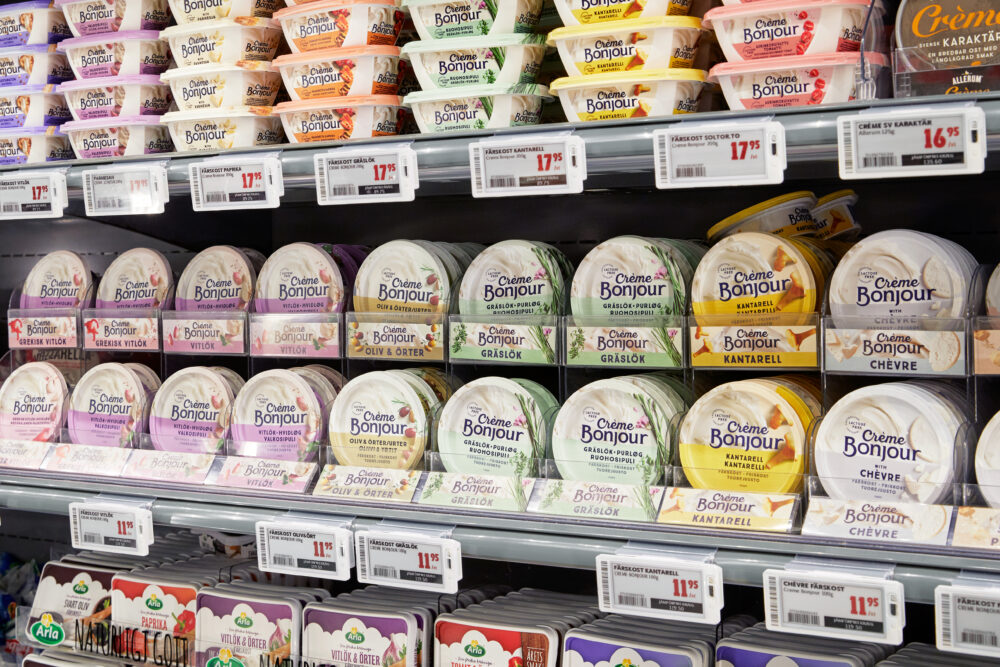Supermarkets can reduce fresh food waste by making their customers a broader and more appealing offer, says Duncan Potter, CMO of Pricer.
Everyone wants their Christmas to be perfect and when it comes to buying food, this generally means buying the best of everything and in large quantities. The 5-kilo turkey turns out surprisingly to be able to feed more than 10 people. And the 10 people simply do not have room for another mince pie, canape, chocolate pudding, glass of port and so on. Result? More waste than at any other time of year; cookware company Grundig estimates that just during the Christmas, two million turkeys, five million Christmas puddings, and 74 million mince pies get thrown out while still edible, leading to around 270,000 tons of food waste.

At home, the answer to waste reduction has always been imaginative ways with leftovers – turkey and parsnip soup, bubble and squeak for all those uneaten brussels sprouts, and bottles stored away for the summer church raffle.
In the supermarket, as they try to get their fair share of the Christmas bonanza as well as meet their customers’ expectations, the grocers have a different problem and are an early victim in the creation of a waste mountain. It’s a tough one; in our recent survey of European consumer habits, 60% of consumers state that they are much less likely to continue buy from a retailer who has missing items on the shelves. On the other hand, 70% expect their chosen grocer to be committed to reducing food waste.
Meanwhile, supermarkets throw away the equivalent of 190 million meals a year, according to the Independent newspaper. However, there is growing demand for food that would otherwise be thrown out. There is a growing army of customers for whom choice means variable prices for variable quality or freshness. And with the growth of alternative diet choices (vegetarian, vegan, macrobiotic etc.) these include people for whom vegetables are prized, even if they are wonky, of wildly inconsistent size or colour, or simply near, at or beyond their official sell by date. The demand is there and supermarkets simply need the technology that will enable them to make the customer a range of adjusted offers.
This requires technology companies to partner to better manage inventory and reduce food waste. With dynamic pricing retailers can reduce food waste significantly. By using electronic shelf labels that can make universal prices changes in an instant, retailers can systematically work to match demand, expiry date and selling price.
This also enables grocers to offer multiple price options to customers, a cheaper price for items nearing expiration date and a more expensive price for the fresher product. These monetary incentives not only reduce food waste, but they also educate consumers on how most grocery store items are safe to eat near or even beyond their expiration date. This is starting to enable supermarket to offer greater variability of a single product – wonky carrots that grow naturally but are generally discarded on the false assumption that consumers want uniformity.
By using advanced technologies these solutions can work in a more dynamic way than standard procedures of making big price reductions just before expiry dates. By combining a smart expiration date management and analytics, grocers can create a waste management culture to minimize food waste and maximize staff efficiency. With a waste management solution, retailers can typically spend up to 80% less time and reduce food waste with up to 40%.
Reducing waste of course has value beyond price to supermarkets that are often in the media firing line on waste, and the pressure is mounting for them to take a more active approach on sustainability. Once sustainability is considered in terms of the whole product offer, customers are more deeply engaged around their personal environmental aspirations. In research by Pricer in 2021, 55% of grocery shoppers said they have tried to be more mindful of buying locally in an effort to be more sustainable while 43% said they don’t mind paying extra for sustainable products, as long as they can clearly see the item’s green credentials at the shelf-edge.
The result, although it is still early days, is that food in supermarkets is now telling its own story around source, selection, supply chain, shelf life, price and promotion. Electronic shelf edge labelling has the capacity and the agility to tell this story in ways to suit every kind of customer, whatever type of Christmas they may have planned.
















